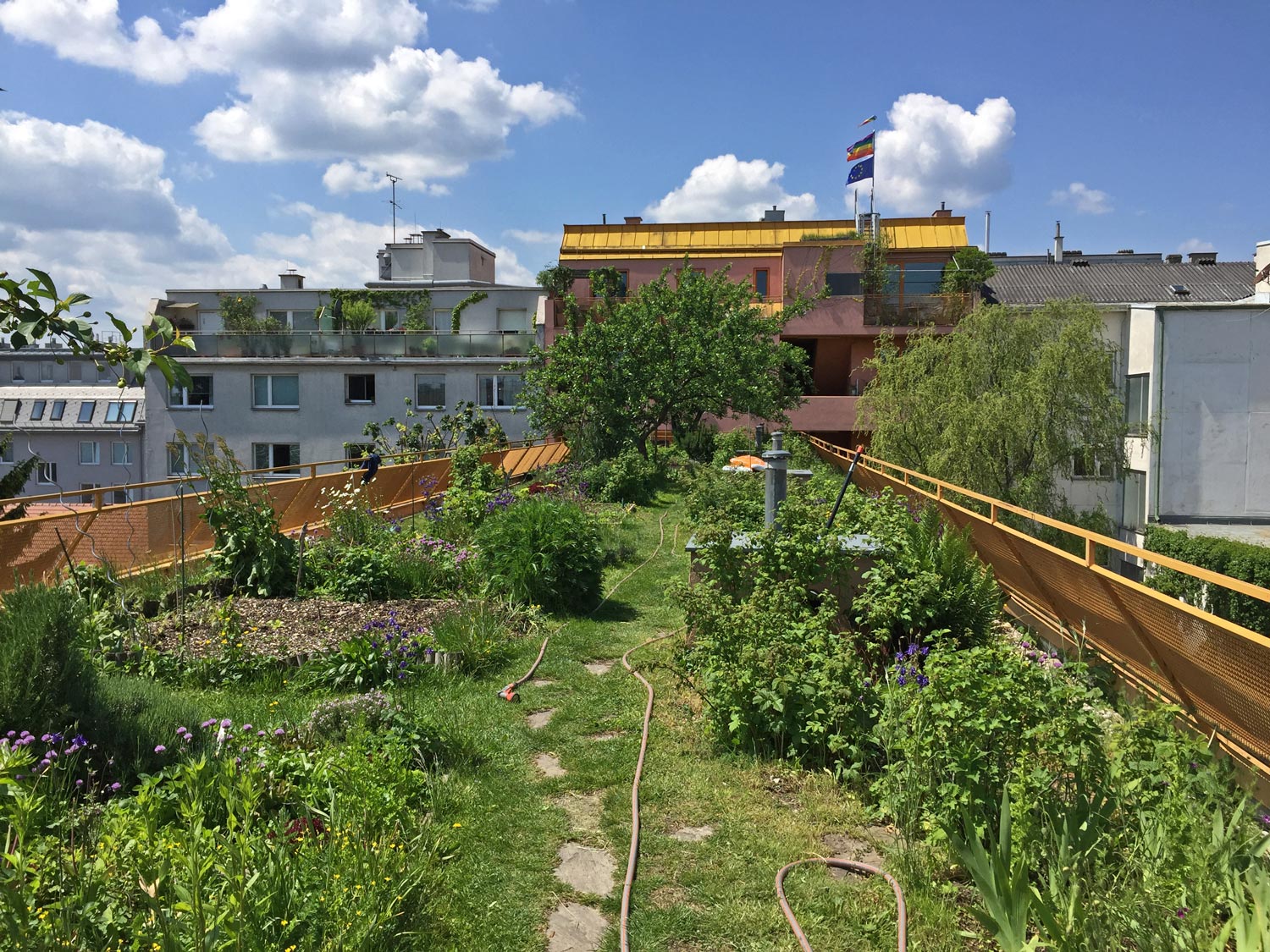In future more and more people will inhabit urban areas around the world. Whereas roughly half of the world‘s population lived in cities in 2005, the current forecast is that by the year 2050 the proportion will be about two-thirds (World Urbanization Prospects UN 2018).
Urbanization and global warming are linked closely. For one thing, urban areas consume a great deal of energy and other resources, and – with their traffic levels and their concentration of industry and commerce – are among the main emitters of carbon dioxide. Then again, the effects of global warming are more drastic in cities than in less densely populated areas. The microclimate in a city is noticeably different from the climate in its surroundings. Building density, a very high percentage of impermeable surfaces, limited vegetation and substantial air pollution cause temperatures to raise. Extreme weather events such as heatwaves, strong winds, storms and torrential rain, which occur more often due to global warming, cause alarming climatic conditions and impair many citydwellers’ health and quality of life.
Green urban oases
Green and open spaces can really help to adapt urban systems to global warming and permanently improve living conditions in cities. Vegetation in densely built-over zones, such as greenery on buildings, parks, green corridors, rain gardens, functional tree-planting, roadside greenery, community gardens, etc. have several positive effects: they counteract the spread of buildings and impervious surfaces, improve the microclimate and hydrological balance, mitigate the heat-island effect and help to cope with extreme weather events.
Interlinked green infrastructures in cities help to preserve biodiversity, diminish air pollution, dust, noise and carbon dioxide emissions, and save costs and energy for air-conditioning buildings. On top of this, green open spaces are important for social interaction, provide some experience of nature and encourage public initiatives and activities among citydwellers, such as “Urban Gardening” or “Urban Farming” to produce fresh and local food for one’s own use.
Within the framework of the programmes City of Tomorrow (Federal Ministry for Transport, Innovation and Technology/bmvit) and Smart Cities Demo (Climate and Energy Fund) new technologies and approaches for the “green city” are constantly being developed and demonstration projects evaluated under real-life conditions. The topics range from pioneering technologies for vertical greening of buildings, via comprehensive approaches to greening existing building stock and new neighbourhoods, all the way to vertical farming strategies for growing food in cities while economizing on resources.
The number of “tropical” nights in which the air temperature does not go below 20 °C is expected to increase in the next few years. In densely built-up areas the Urban Heat Island (UHI) effect – causing the air temperature within cities to rise significantly higher than in its surroundings – will become more frequent. A number of different impact factors act as negative drivers: buildings with large flat surfaces absorb a high percentage of solar radiation, the materials used in buildings and roads act as heat storage media releasing radiant heat only very gradually, and many urban processes (involving industry, power stations, air-conditioning equipment and road traffic) emit another great quantity of waste heat. Cities’ capacity for cooling is much lower than that of peri-urban or rural areas: with little permeable surface area, rainwater soon runs off into the sewers, therefore the natural cooling caused by evaporating surfaces is not available. And an exchange of air with the city’s cooler surroundings is impeded by a dense agglomeration of buildings.
In german: Stadt 4.0 – Grün statt Grau
Wissenschaftsdokumentation NEWTON
Ein Film von: Claudia und Peter Giczy, Länge: 25 Minuten

